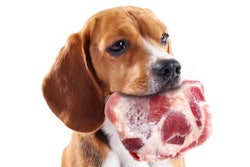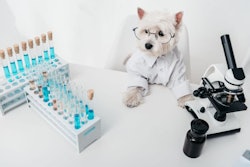
Nutrition information on pet food labels strongly influences consumers’ purchasing decisions, according to a survey by custom label producer Luminer Converting Group. Certain types of labels offer more space for data and background information about the dog, cat and other pet foods contained within.
“Fold-out and peel-reseal labels tend to be the most popular since they’re the most cost effective compared to booklet labels,” Dan Goldstein, marketing and account manager for Luminer, told Petfood Industry. “This of course is dependent on how much information a client is looking to include on their product label. Booklet labels can accommodate upward of 60 pages of information.”
-
Booklet pet food label
“The primary advantage of booklet label is that is can contain a large amount of information, but at an increased production cost,” he said.
-
Fold-out and peel-reseal pet food labels
“Peel-reseal labels can contain three panels of information and a fold-out label can contain several panels of information all for rather equitable costs,” Goldstein said.
Top influences on pet food purchases
In Luminer’s survey, four factors most influenced pet owners’ decisions to purchase particular pet foods. Overall, pet owners craved information about the nutritional value of pet food formulations, and they wanted that information clearly and abundantly presented on pet food packaging.
“When pet food brands provide nutritional information in detail on their products, it’s a win-win situation both for the pet owner and the pet food company,” wrote Luminer’s pet food market analysts in their report about the survey.
Factors influencing pet owners purchase decisions
- Packaging and nutritional information – Survey respondents reported perusing pet food packaging to learn about which ingredients were and were not included. Pet owners also said they paid heed to claims such as natural and organic. Forty-two percent of participants stated that this data on pet food containers was the top influence on their decision to select one pet food over another.
- Online research and reviews – Pet owners also look online to learn about pet foods, not only from the manufacturer, but also from other consumers’ reviews and other sources on the internet. Of Luminer survey participants, 25 percent said this digitally derived information was most important when pondering a pet food purchase.
- Word of mouth/ referrals – Internet-based communications haven’t yet completely replaced verbal communications. Eighteen percent of surveyed pet owners reported that input from other people held the most sway when they decided which pet food to buy.
- TV commercials or online ads – Marketers take heart, seven percent of respondents reported that advertisements either online or on television most influence their purchasing decisions.
The remaining survey participants responded that other factors were the strongest influence on their selection of a particular pet food.















